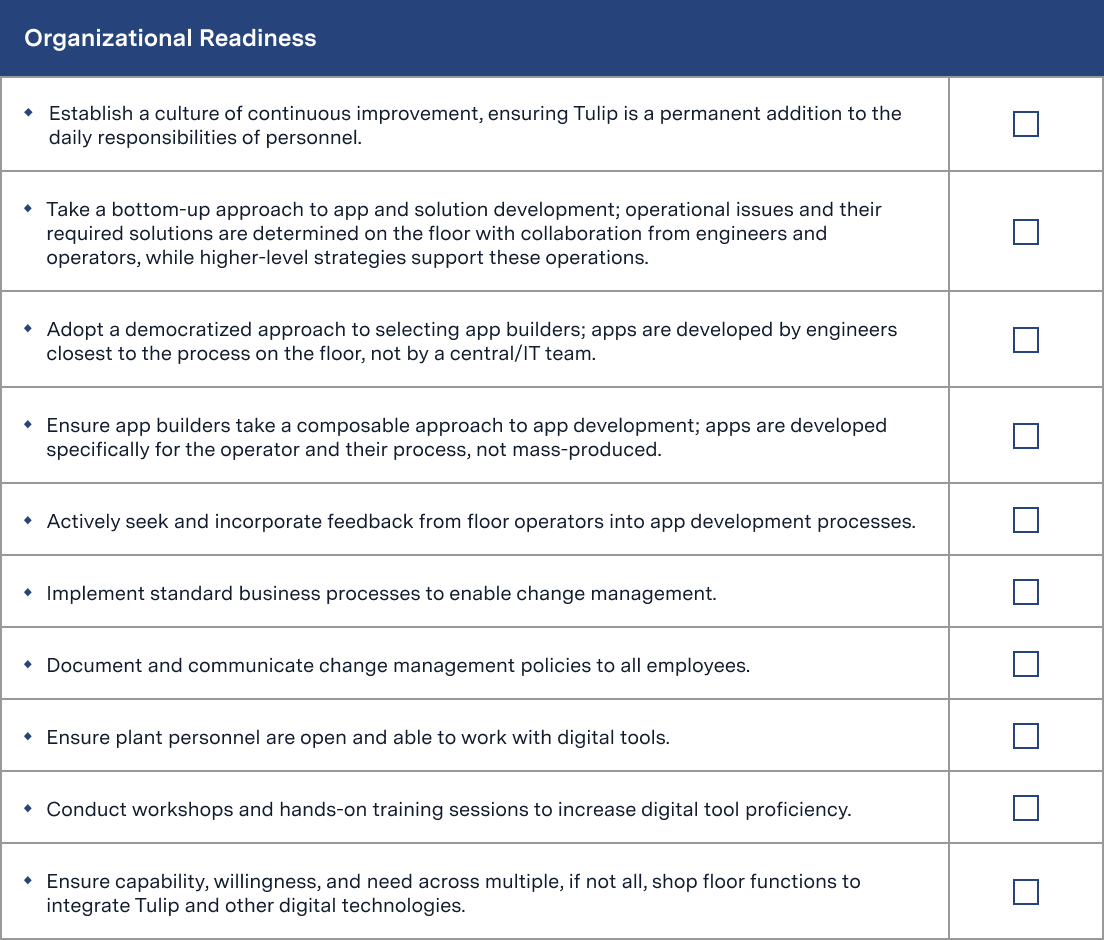This article is one dimension of our Digital Transformation assessment.
Overview
Digital Maturity measures how ready your organization is on a cultural, structural, and technical level to adopt and implement a digital tool like Tulip. Being successful with Tulip means adopting ongoing iteration and support in order to increase productivity gains. This might mean making structural changes within your organization, such as adjusting roles and responsibilities, fostering a culture of continuous improvement, and ensuring your technical infrastructure can support ongoing development.
Organizational Readiness
Our organizational readiness checklists assess cultural mindset and structural alignment. Are your operators ready and willing to adopt new technologies? Can current personnel fit Tulip into their permanent responsibilities?
The key concepts your organization should adopt in order to be successful with Tulip are:
- Bottom-up approach: Operational issues and their required solutions are determined on the floor with collaboration from engineers and operators. Higher-level strategies are formed to support these operations.
- Democratization: It is critical that solutions are developed by engineers on the floor. Process engineers know the most about the operators and the process, so they can tailor apps to their specific needs. They can also develop and change apps faster themselves, rather than waiting on an IT request.
- Composability: Apps must be developed specifically for the operator and their process. Apps that are centrally or mass-produced are generic and will not fit each operation.
- Continuous Improvement: Tulip is a permanent addition to the daily responsibilities of personnel. Exponential productivity gains are only achieved through improving apps and processes through iteration.
Checklist

Download Digital Transformation checklists here.
Technical Readiness
Technical readiness takes a look at your organization’s technical capabilities and whether or not you have the infrastructure in place to deploy Tulip. This includes evaluating your current IT infrastructure to ensure it can support the Tulip platform, such as having reliable internet connectivity, sufficient hardware like PCs, tablets, and Edge devices, and necessary peripheral devices like barcode scanners and printers. Additionally, it involves assessing whether your systems are "cloud-ready" and if your organization has a "cloud-first" technology strategy. Depending on your organization size and requirements, you may also need to establish network security protocols and set up SAML integration to manage user authentication and authorization.
Checklist

Download Digital Transformation checklists here.